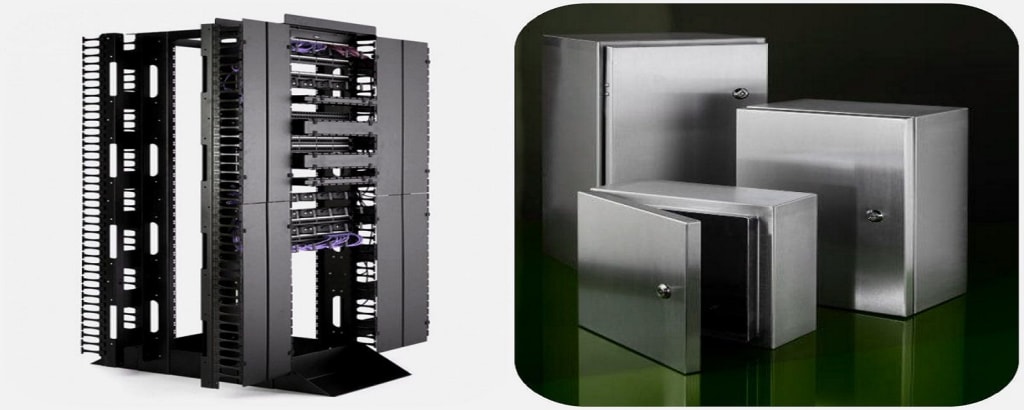Understanding Electronic Enclosures: Everything You Need To Know
Plastic and rubber are two popular types of insulators since neither conducts electricity as other common materials do. Where the enclosure itself is not intended to transport power, a plastic container could be the most appropriate choice.

Boxes are a common choice for the construction of housings that enclose electronic components such as switches, relays, printed circuit boards (PCBs), integrated circuits, power supplies, central processing units (CPUs) and so on. They may be constructed from a wide variety of materials and in a wide range of sizes, depending on criteria such as the intended application, operating circumstances, desired aesthetics, budget and other considerations.
Imagine you have an electrical device that allows water to enter too easily, children may be able to touch the elements inside or the components can be exposed to heat or moisture. This piece of technology won't last long, since it is susceptible to deterioration from the atmosphere around it and also presents a potential threat to users' health. Engineers working in the fields of electronics have devised frameworks to protect the device as a whole from any environmental, or other harm, that may have been caused by its exposed inner workings. These engineers are responsible for the development of frameworks which protect equipment and users and maintain safe and reliable use. Due to the fact that these structures are used to house electronic equipment, we refer to them as "electrical enclosures."
The benefits of utilising a particular material for an electronic enclosure vary depending on the electronics included inside the enclosure. Plastic and metal are the two most prevalent materials used by manufacturers to make enclosures, and this article will discuss each of them in more detail.
Reasons Why Plastic Enclosures Are Preferable
- Containers are Non-Magnetic
Magnetic interference occurs when certain electrical equipment is in close proximity to a magnetic field. Using plastic for enclosure construction virtually eliminates the possibility of magnetic interference.
- Isolating Enclosures
Plastic and rubber are two popular types of insulators since neither conducts electricity as other common materials do. Where the enclosure itself is not intended to transport power, a plastic container could be the most appropriate choice. For instance, a laptop's motherboard and central processing units (CPUs) are shielded by enclosures. They are constructed completely from plastic to eliminate the possibility of a short circuit occurring by mistake and causing the technology to fail.
- Watertight Plastic Enclosures
Moisture cannot penetrate plastic enclosures which are made to be watertight. Because of this, they may be used even when the circumstances are damp. But if water were to make contact with a plastic container, it would not rust as metal would.
- Low-Cost Polyethylene
Plastic is a material that is both cost-effective and efficient. Aluminium enclosures are the norm in this business; nevertheless, the cost of making enclosures made of plastic is far cheaper. Metal can be cumbersome, in contrast to the low weight of plastic containers.
Most portable electronic devices have plastic casings because they are easier and cheaper to transport than other materials. This category includes various electronic devices such as remote controllers, gamepads, mobile phones and chargers.
- Components with a Bendable Shell
Because of the one-of-a-kind chemical compositions of these containers, they may be twisted or folded to satisfy a wide variety of requirements. Since they are machinable, they may be used to construct complicated shapes that can provide a close fit.
What Are The Benefits of Metal Enclosures?
Aluminium and stainless steel are two common metals used in constructing electronic enclosures. The use of them for this purpose has several benefits, some of which are detailed below.
- Pros of Using Aluminium for Electronic Cases
- They can prevent rusting and corrosion.
- There is no way for radio waves to get through them.
- They can withstand high temperatures.
- They have the potential to be recycled with little effort.
- UV rays cannot penetrate aluminium casings.
- They are very lightweight compared to other, heavier materials such as steel.
- The advantages of electronic enclosures made of stainless steel include the following:
- They function well in high-pressure environments.
- They are long-lasting and may preserve their shape and appearance for a considerable time.
- When food is kept in containers made of stainless steel, none of its qualities such as appearance, scent, or taste will be altered in any way.
- It has a very long lifespan.
- It is affordable and therefore helps keep production costs down.
- It can withstand high temperatures, increasing its usability in certain environments.
Conclusion
When we consider the broad availability of mobile electronic devices and the fast expansion of the electronics industry, which also encompasses the production of dc electric motors, it becomes apparent how important enclosures are. So many people use a variety of electronic devices daily, such as mobile phones, radios, microwaves, remote controls, laptops and so on, that it is essential how enclosures must be designed in a correct and safe manner. Despite this, it is one of the electrical sections that requires the least amount of definition. There are lots of enclosures available on the market, but engineers still may have trouble deciding which model and material is the most suitable for the particular needs of their product.
About the Creator
William Dow
ERNTEC is a 100% Australian owned and run company which provides enclosure solutions to a variety of industries. It offers enclosure solutions like electrical cabinets and enclosures.






Comments
There are no comments for this story
Be the first to respond and start the conversation.